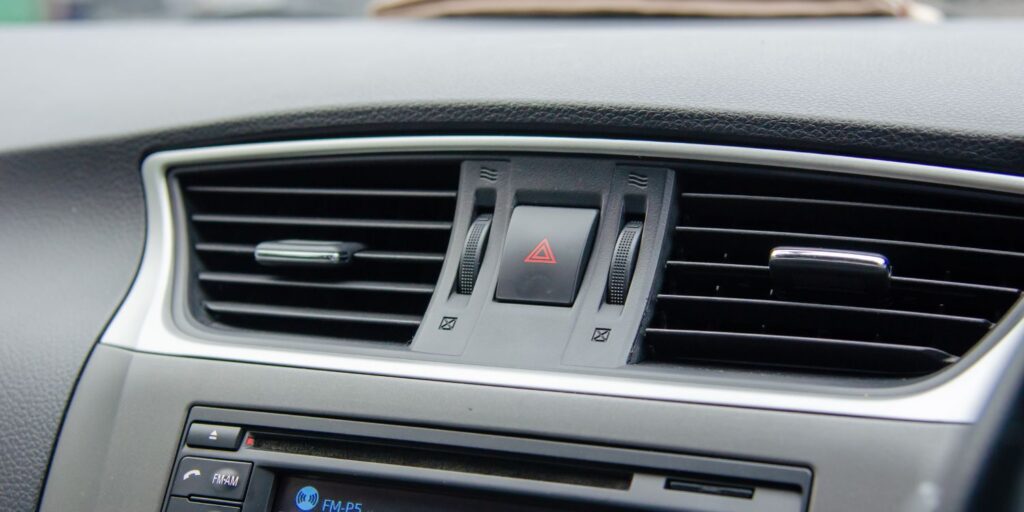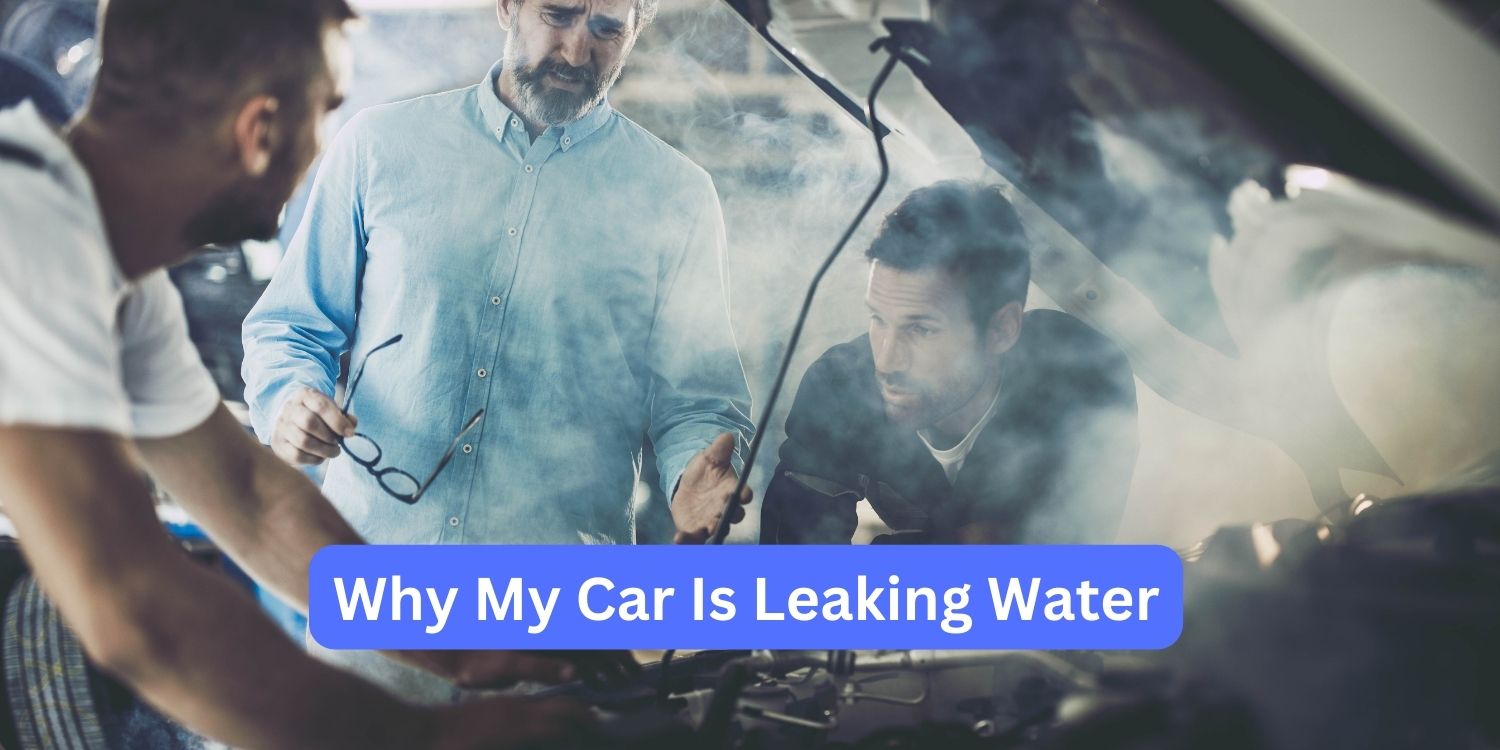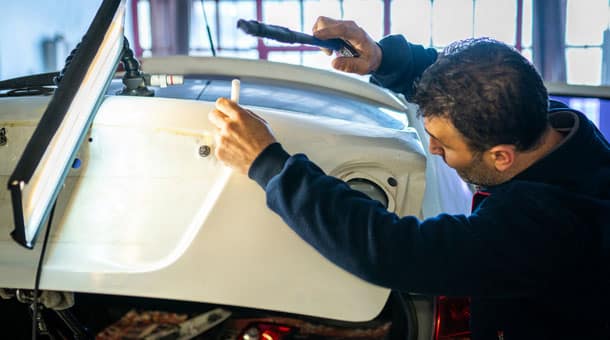Why Is My Car Leaking Water?
Water leaks in cars can cause concern for any vehicle owner. From mysterious puddles in the garage to damp carpets inside the car, discovering water where it shouldn’t be can be alarming.
But what causes your car to leak water, and how can you resolve it? Let’s explore common causes and solutions to tackle this problem.
Understanding the Concern
The sight of water under your car can trigger worries about significant damage or impending repairs. However, not all water leaks are signs of catastrophic failures. Some leaks can be relatively minor and easily fixable.
Understanding why your vehicle is leaking water is step one toward resolving the difficulty and making sure your vehicle has the finest performance.
Common Causes of Water Leaks
Below are some potential causes of why your car is leaking.
Condensation from the Air Conditioning System
Condensation from the air conditioning (AC) system is among the most frequent causes of water puddles under cars. As the AC operates, it removes moisture from the air inside the vehicle.
This moisture accumulates and drips from the evaporator drain tube, typically underneath the car. However, excessive leaking could indicate a clogged drain tube or other issues with the AC system.

Coolant Leak
Another potential culprit behind water leaks is a coolant leak. Coolant, known as antifreeze, circulates through the engine to regulate its temperature. If a cooling system leaks, you might observe water gathering under the car with a sweet smell.
Coolant leaks can stem from damaged hoses, a faulty radiator cap, or a cracked radiator.
Learn more about How To Waterproof A Car?
Rainwater Intrusion
Rainwater can also find its way into your car, especially if there are gaps or damaged seals around windows, doors, or the trunk.
Poorly sealed windshields or back glass can allow water to seep into the interior, causing dampness and potential damage to electronics or upholstery.
Leaking Seals or Gaskets
Over time, seals and gaskets in various parts of the car may degrade or develop leaks. Common areas prone to seal or gasket leaks include the engine, doors, windows, and sunroof.
These leaks can result in water infiltration, leading to puddles inside the vehicle.
Sunroof Drainage Issues
If your car is equipped with a sunroof, blocked or damaged drainage tubes can cause water to accumulate inside the vehicle.
Leaves, debris, or even insects can obstruct these drainage channels, preventing water from properly draining away from the sunroof.
Faulty Windshield Seal
A compromised windshield seal can allow water to enter the car, especially during heavy rain or driving through puddles.
Cracks or gaps in the sealant around the windshield can create openings for water to penetrate, resulting in interior leaks.
Identifying the Source of the Leak
To effectively address a water leak in your car, you need to pinpoint its source. Conducting a visual inspection of the vehicle’s exterior and interior can help identify potential areas of concern.
Additionally, diagnostic tools such as pressure tests or UV dye can aid in locating hidden leaks. If you need clarification on the source of the leak or if it persists despite your efforts, it’s advisable to seek assistance from a professional mechanic.
Addressing Condensation from the AC
If the water under your car results from condensation from the AC system, you can take several steps to remedy the issue. Start by ensuring that the drain tubes are clear of debris and obstructions.
Periodically cleaning these tubes can prevent water from backing up into the cabin. Furthermore, inspecting the AC system to identify and swiftly address any mold or mildew buildup can assist in preserving indoor air quality.
Dealing with Coolant Leaks
Coolant leaks require prompt attention to prevent engine overheating and potential damage. Begin by checking the hoses, connections, and radiator for any signs of leakage.
Tighten loose connections or replace damaged components as necessary. It’s also essential to verify the condition of the radiator cap and reservoir to ensure proper coolant circulation.
Preventing Rainwater Intrusion
To prevent rainwater from infiltrating your car, inspect the seals around doors, windows, and the trunk for signs of wear or damage. Replace worn-out seals to maintain a tight seal against water ingress.
Additionally, clearing debris from drainage channels and addressing rust or corrosion can help prevent water leaks during rainy weather.
Fixing Seal and Gasket Leaks
Seal and gasket leaks can often be addressed by replacing the worn-out components.
Whether it’s the engine gasket, door seals, or window seals, timely replacement can prevent water from seeping into the vehicle. In some cases, using sealants can provide temporary solutions until permanent repairs can be made.
Addressing Sunroof Drainage Issues
If your car has a sunroof, regularly inspecting and cleaning the drainage channels can prevent water buildup and subsequent leaks. Remove debris or blockages from the drainage tubes to ensure proper water flow.
If the drainage tubes are damaged, they may need to be repaired or replaced to prevent water leaks.
Repairing Faulty Windshield Seals
A compromised windshield seal should be addressed promptly to prevent water leaks and potential damage to the vehicle’s interior.
Inspect the sealant around the windshield for cracks or gaps, and apply windshield sealant as needed to create a watertight barrier.
Professional repair or replacement may be necessary if the seal is severely damaged.

FAQ (Frequently Asked Questions)
Frequently asked questions about water leaking from under the car.
Why is water leaking from under my car?
Common causes include condensation from AC, coolant leaks, and compromised seals.
How do I pinpoint the origin of the water leak?
Visual inspection and diagnostic tools like pressure tests can help pinpoint the issue.
Is water leakage always a significant concern?
Not necessarily; some leaks are minor, like AC condensation.
What should I do if I suspect a coolant leak?
Check hoses, connections, and the radiator for signs of leakage.
How can I prevent future water leaks in my car?
Regular maintenance of seals, gaskets, and drainage channels is key.
Can rainwater cause leaks in my car?
Yes, if there are gaps or damaged seals around windows, doors, or the trunk.
What causes sunroof drainage issues?
Blocked or damaged drainage tubes can lead to water accumulation.
How do I address a faulty windshield seal?
Inspect for cracks or gaps and apply a sealant for a watertight barrier.
Are there any specific signs indicating a coolant leak in my car?
Signs may include a sweet smell or steam from under the hood.
What steps can I take to clear blocked sunroof drainage tubes?
You can use compressed air or a thin wire to remove debris obstructing the drainage tubes.
Final Words
Understanding the root cause of water leaks in your car is essential for effective resolution and optimal vehicle performance. While discovering water beneath your car may spark concern, it’s vital to discern that not all leaks signify significant issues.
Common culprits include condensation from the AC system, coolant leaks, rainwater seepage, compromised seals or gaskets, sunroof drainage issues, and flawed windshield seals.
Identifying and promptly addressing the source of the leak, whether through DIY measures or professional assistance, is crucial for preventing further damage and maintaining your vehicle’s integrity.
Consistent inspection and maintenance of critical components can also help mitigate future leaks, ensuring a safe and comfortable driving experience.




